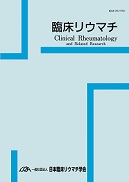Volume 35, Issue 1
Displaying 1-6 of 6 articles from this issue
- |<
- <
- 1
- >
- >|
-
2023 Volume 35 Issue 1 Pages 1-3
Published: 2023
Released on J-STAGE: July 07, 2023
Download PDF (674K)
-
2023 Volume 35 Issue 1 Pages 4-12
Published: 2023
Released on J-STAGE: July 07, 2023
Download PDF (816K)
-
2023 Volume 35 Issue 1 Pages 13-21
Published: 2023
Released on J-STAGE: July 07, 2023
Download PDF (829K) -
2023 Volume 35 Issue 1 Pages 22-34
Published: 2023
Released on J-STAGE: July 07, 2023
Download PDF (810K) -
2023 Volume 35 Issue 1 Pages 35-43
Published: 2023
Released on J-STAGE: July 07, 2023
Download PDF (764K) -
2023 Volume 35 Issue 1 Pages 44-52
Published: 2023
Released on J-STAGE: July 07, 2023
Download PDF (1274K)
- |<
- <
- 1
- >
- >|
